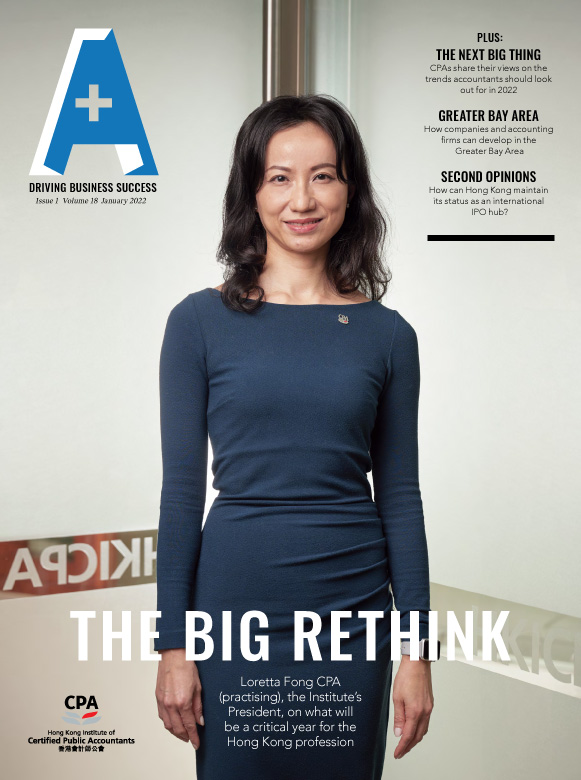Our A Plus September 2021 issue article provided an overview of the recent International Accounting Standards Board’s (IASB) proposal – a new International Financial Reporting Standard (IFRS) that would permit eligible subsidiaries to apply reduced disclosure requirements when applying IFRSs in its financial statements.
In January, the Institute’s Standard Setting Department responded to the IASB’s Exposure Draft (ED) Subsidiaries without Public Accountability: Disclosures. This article highlights our response to the ED. The full response is available on our website.
Objective of the draft standard
We welcome the proposed new IFRS and consider that it would reduce costs for eligible subsidiaries to prepare their financial statements while maintaining the usefulness of financial statements for users.
Nevertheless, to help stakeholders better understand the effects of the draft standard and distinguish between different sets of accounting standards, we recommend that the IASB provide educational materials, such as a comparison of the disclosure requirements between IFRSs, the IFRS for SMEs standard and the draft standard, and illustrative financial statements, once the draft standard is finalized.
Scope of the draft standard
We understand that the draft standard is intended to address the cost-benefit considerations for a subset of small and medium entities (SMEs) – subsidiaries without public accountability. However, we consider that extending the scope of the draft standard to all SMEs without public accountability would enable more SMEs to benefit from the reduced disclosure requirements and would set a better direction for the evolution of the IFRS for SMEs standard. In addition, we do not see any reason for restricting the scope of the draft standard to subsidiaries when it has been developed based on the disclosure requirements in the IFRS for SMEs standard, which was designed for SMEs regardless of whether they are a subsidiary or not. Accordingly, we recommend that the scope be extended to cover all SMEs without public accountability.
The draft standard uses the concept of “available for public use” (as in IFRS 10 Consolidated Financial Statements) when defining its scope. However, IFRS 10 and the draft standard do not provide any guidance on what the term means, for example, whether simply making the consolidated financial statements of the parent available upon request will meet the requirement or whether the parent must be a listed entity. While we understand that the term has been used for a long time and practice has evolved, we consider that the proposals in the ED are likely to put pressure on the definition of “available for public use.” If the IASB were not to extend the scope to all SMEs and retain the criteria in relation to “available for public use,” we suggest that the IASB consider providing clear guidance on this matter.
Approach to developing the draft standard
Overall, we do not disagree with using the disclosure requirements from the IFRS for SMEs standard as the starting point for developing the draft standard, rather than starting from the IFRSs. However, we observe that most eligible subsidiaries may already be using full IFRSs for reporting to their parents. Therefore, using IFRSs as the starting point and providing disclosure exemptions under each IFRS would be more preferable as it helps eligible subsidiaries understand and apply the draft standard more effectively and efficiently.
Some of our respondents noted that the IASB is currently undertaking two other projects, namely the Second Comprehensive Review of the IFRS for SMEs Standard and the Disclosure Requirements in IFRS Standards – A Pilot Approach. These two projects either have similar scope (entities without public accountability) or objective (address disclosure problems) as the draft standard. They questioned how these two projects interact with the draft standard, in particular, in respect of the approach to developing the draft standard going forward. Hence, we suggest that the IASB clarify this matter.
Disclosure requirements
We have provided several suggestions to improve the disclosure requirements in the draft standard. In particular, we consider that disclosures about liquidity and measurement uncertainty should be required in the draft standard in accordance with its drafting principles, and would be useful to users.
We agree with the proposal and the rationale as stated in the ED that the draft standard should not include reduced disclosure requirements for insurance contracts within the scope of IFRS 17 Insurance Contracts. However, we consider that the IASB should continue to assess the effectiveness of the disclosure requirements in IFRS 17 and propose reduced disclosure requirements in the draft standard after entities have applied IFRS 17 for some time, once users are familiar with the new accounting model for insurance contracts and its effect on an entity’s financial statements.
Structure of the draft standard
We note that the draft standard is not an exhaustive list of disclosure requirements. It includes footnotes that require entities to refer to other IFRSs for disclosures that remain applicable when entities adopt it. Entities may easily miss these disclosure requirements. Accordingly, we recommend that the IASB incorporate the disclosures as currently required in the footnotes into the body of the standard so that entities would not need to cross-refer to the disclosure requirements in IFRSs.
This article was contributed by Anthony Wong CPA, Associate Director, the Institute’s Standard Setting Department.














